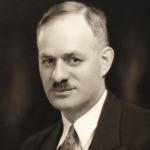 (Host)
(Host)
Commentator Tom Slayton is a long time journalist and observer of all
things Vermont. And this summer, he’s exploring one of those familiar
"hiding in plain sight"
treasures that are available to all Vermonters – our State Park system.
(Slayton) Mount Philo, a 900-foot eminence in Charlotte with a
sweeping view of the Champlain Valley, became, in 1924, Vermont’s first
state park. It’s easy to see why.
From its strategically placed
summit you can see half the Champlain Valley, a huge blue swath of Lake
Champlain itself, and, far across the lake, the jumbled peaks of the
high Adirondacks.
It’s a grand array. But there’s another grand
array that you can’t see, not even from Mount Philo – the striking range
and variety of Vermont’s 52 state parks.
From rugged mountain
climbs to quiet sandy beaches, and from primitive, tents-only camping on
an island in the middle of Lake Champlain to a pleasant inn with its
own trout pond, Vermont’s State Parks offer many different experiences.
Thirteen of the parks include buildings that are listed on the National
Register of Historic Sites, and one has a national scenic highway
threading through it.
This state’s remarkable natural diversity
undoubtedly has a lot to do with the striking diversity of Vermont state
parks. But there’s another reason as well: a remarkable man named Perry
Merrill.
He was director of State Parks for more than 40 years,
and in the Great  Depression, when President Roosevelt created the
Depression, when President Roosevelt created the
Civilian Conservation Corps to build low-cost public works
projects throughout the country, Perry Merrill was ready. As soon as the
CCC was created, when its administrators were looking for places to go
and things to build, he went to Washington with a list in hand of
shovel-ready projects – most of which created or enhanced outstanding
natural spots in Vermont. In short, Merrill got the federal government –
the CCC – to build the core of Vermont’s remarkable State Parks system.
Craig Whipple, the current director of state parks, told me
recently that Vermont had the largest CCC contingent in the country –
there were major camps in Waterbury, Ascutney, and elsewhere. Having 52
state parks is a huge number for a state Vermont’s size, and Perry
Merrill’s foresight and aggressiveness is a major reason.
More
parks have been added from time to time; several were created during the
1960s and 70s, as part of a statewide effort to attract tourists to
Vermont. The result is an impressive system of parks and natural areas
that offer everything from vigorous hikes up rocky peaks to historic old
lakeshore hotels, and streams and waterfalls so pretty they take your
breath away.
I’m going to spend a good part of the summer taking
you to some of the most interesting of these parks. For openers, we’ll
spend a quiet night watching flying squirrels beside the Connecticut
River, and then climb up Mount Ascutney, a steep climb that is rich in
local history. And there will be many more.
I think it’s
probably the best assignment any journalist could have this summer. And I
hope you will join me for some of these adventures!